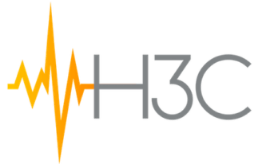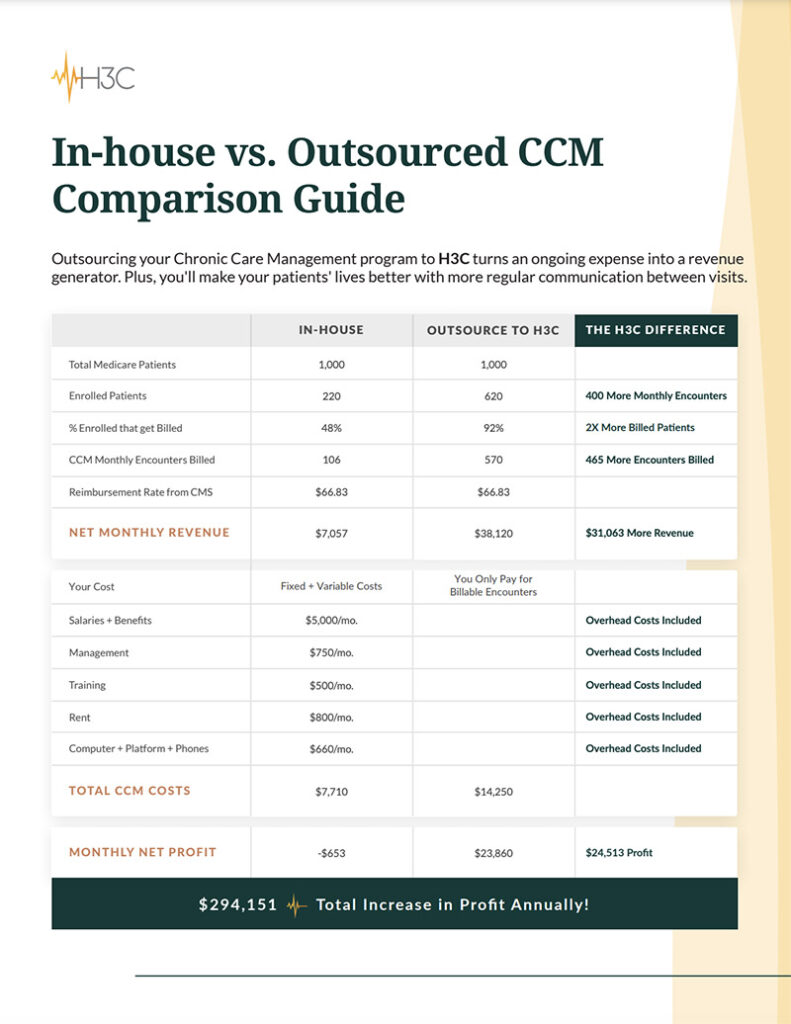Table of Contents
Medical providers are inundated with billing codes and we want to clarify the CPT codes and billing procedures for chronic care management in 2022. Understanding billing codes and processes is especially important in CCM program management because it helps to project revenue, plan resource allocation, and optimize staff capacity.
Encounter Standards in CCM
Encounters refer to each interaction between a patient and the medical provider. It’s critical for data tracking and reimbursement based on qualification standards. The primary encounter standard qualifiers are:
- Encounter type
- Encounter diagnosis
- Date and time with start and stop times for checkups
- Encounter location and disposition (type of facility)
For CCM specifically, the length and content of the call are important metrics. Medicare Part B covers 80% of the benefit to patients. Providers receive $62 on average for 20 minutes of monthly service for each patient.
For the sake of billing, it’s important to note this applies to each calendar month, not 30-day cycles. Additional opportunities to reach higher billing thresholds also exist, providing more opportunity to providers.
How to Bill for Chronic Care Management
Billing for CCM requires five specific elements to cover every basis. The primary code for FQHCs and RHCs is G0511, and the primary code for primary care practices, health systems and other types of providers is 94990. Keep these codes handy as they are frequently applied to billing in CCM programs. When billing for each patient, you will need:
- CPT codes for each program being managed for the patient
- ICD-10 codes tied to each condition managed within the program scope
- Date of service provided
- Place of service provided
- Name of provider administering service
While gathering this information seems tedious on the surface, it’s actually easy with a partner like H3C. We deliver billing reports with everything itemized and ready for quick entry.
After compiling the necessary billing information, finalizing and submitting the bill is a four-step process.
- Verify that CMS requirements were met for each patient in the given month
- Submit claims to CMS monthly
- Send an invoice to patients receiving CCM services monthly
- Double-check to ensure no conflicting codes have been billed
After receiving all of the billing information from H3C, the actual process to submit is very efficient.
Quick Reference: Chronic Care Management CPT Codes 2022
The CCM CPT codes for 2022 are divided between standard CCM and Complex CCM. The complex group applies to those requiring additional consultation beyond the standard program. Different rate reimbursements associated with each code are listed below.
Chronic Care CPT Codes
- 99490 – This CPT code includes two primary care situations. The first 30 minutes of care provided by a physician or non-physician practitioner is reimbursed at $86.17.
Additionally, a minimum 20 minutes (cumulative) in a 30-day period of not in-person monitoring of the care plan is reimbursed at $64.02.
- 99439 – Under this CPT code, subsequent 20 minutes of care by clinical staff is reimbursed at $48.45.
Subsequent care by a physician or non-physician practitioner is reimbursed at $61.25.
Complex Chronic Care CPT Codes
- 99487 – Minimum of 60 minutes (cumulative) over 30 days of not in-person consultation time toward establishing or monitoring chronic conditions care plan. Reimbursed at $134.27.
- 99489 – Billed alongside CPT 99487 for every additional 30-minute consultation (not in-person). Reimbursed at $70.60.
Rule Updates Regarding CCM and TCM Overlap
In the past, billing for Chronic Care Management and Transitional Care Management was not possible in the same month. That has changed and new rules now allow for overlap in that initial month after discharge.
Transitional Care Management is designed to specifically serve the 30 days following discharge from an inpatient stay. This time period is vulnerable and extending care means patients are less likely to be readmitted. Chronic Care Management is specific to patients with two or more chronic conditions.
This decision benefits patients because they will receive extended care to manage the transition and can also receive specific care to monitor and reinforce prescription adhesion for their specific chronic conditions.
Codes for CCM and TCM are distinct as they are different programs. Make sure they are billed separately and not combined or confused. The change only makes it possible to bill them in the same month.
H3C Makes it Easy to Use the Correct CPT Codes
Delivering high-quality, consistent care to CCM patients requires diligence. At H3C, we are dedicated to serving our health care provider partners by integrating into their existing EMR and supporting the efforts of physicians, nurses, and staff. Billing is often a time-consuming hassle for medical providers but with H3C, every pertinent piece of information is recorded and delivered to ensure the correct CPT codes and information are correctly input.
Recording and providing billing details is one major piece of our 3-step CCM process. Enrollment, patient outreach and documentation optimize the clinical ability to reach patients beyond the exam room while helping them adhere to medical plans.
According to Medical Economics, one in every four American adults and 66% of Medicare beneficiaries now have chronic conditions. Streamlined CCM program management is more important than ever as the patient population continually grows.
Save the time and effort required to hunt down CPT codes and required information by partnering with the CCM experts at H3C. Get in touch to learn more today.
RPM stands for Remote Physiological Monitoring and CCM program codes fall within the scope of RPM. Your standard CPT codes used to label specific elements within CCM programs are under the RPM code umbrella.
Every CPT code for Chronic Care Management is a five-digit number. Every code also begins with a 994 number and two additional numbers follow. The unique code applies to the service provided as designated by Medicare.
Transitional Care Management (TCM) codes are applied to services in the first month after discharge. Face-to-face visits are included in this program. The TCM code sequences are five numbers.
There is a short window for TCM as the program is designed to prevent readmittance in the first month of post-clinical care. The billing only occurs one time and it accounts for the first 30 days after discharge.
Monthly billing is allowed for CCM as the nature of chronic conditions are ongoing. The billing cycle applies to calendar months, not 30-day time periods. This means billing can occur at the end of one month and beginning of the next depending on the individual patient situation.





